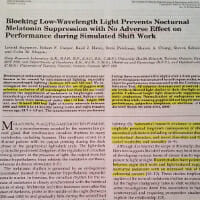Here’s another study specifically geared towards night shift workers. Abstract: Decreases in melatonin production in human and animals are known to be caused by environmental lighting, especially short-wavelength lighting (between 470 and 525 nm). We investigated the novel hypothesis that the use of goggles with selective exclusion of all wavelengths less than 530 nm could [...]
The Science
Here is a small collection of scientific research papers on blue light, melatonin, and circadian rhythms. I have reviewed some of them with an attempt to translate them into language that is more accessible to the general (non-scientific) reader. This list is in no way comprehensive and consists mainly of studies that I have access to. As of now I have not had time to add my own notes and summery. Please consider this page a “work in progress”.

Here is an interesting study specifically designed to determine if blue blocking glasses would be helpful for night shift workers. The specific intention was to discover if blue blockers can negate the powerful melatonin suppression of early morning sunlight that workers may be exposed to on the way home from work. SPOILER ALERT: They work [...]

We’re starting off 2016 with a new Open Access study from the awesome PLOS-One journal. This paper has some limitations, detailed methodology, and one WTF moment. So lets get into it. Have a look at the abstract: The timing, intensity, and duration of exposure to both artificial and natural light have acute metabolic and physiological [...]
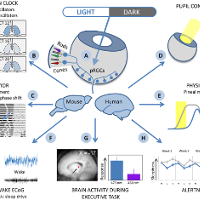
Another awesome open access (FREE!) article! Intro: The 24-hour (h) light–dark (LD) cycle is a fundamental characteristic of Earth’s environment and so its powerful influence on the behaviour and physiology of animals and humans that evolved on this planet is not surprising. In addition to influencing the perception of visual images, light coordinates the temporal [...]
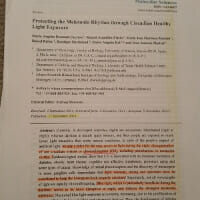
Here is a excellent open access (FREE!) article that appears in the International Journal of Molecular Sciences. This article provides a comprehensive look at the problems with artificial lighting and circadian disruption. When I say comprehensive I mean 398 references! It gets heavy into biology but well worth digging into even if you are a [...]
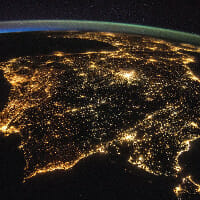
Intro: Daily, lunar and seasonal cycles of natural light have been key forms of environmental variation across the Earth’s surface since the first emergence of life. They have driven the development of biological phenomena from the molecule to the ecosystem, including metabolic and physiological pathways, the behaviour of individuals, geographical patterns of adaptation and species [...]
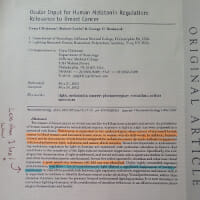
Abstract: The impact of breast cancer on women across the world has been extensive and severe. As prevalence of breast cancer is greatest in industrialized regions, exposure to light at night has been proposed as a potential risk factor. This theory is supported by the epidemiological observations of decreased breast cancer in blind women and [...]

Abstract: The electric light is one of the most important human inventions. Sleep and other daily rhythms in physiology and behavior, however, evolved in the natural light-dark cycle [1], and electrical lighting is thought to have disrupted these rhythms. Yet how much the age of electrical lighting has altered the human circadian clock is unknown. [...]
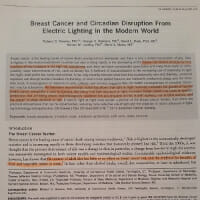
Abstract: Breast cancer is the leading cause of cancer death among women worldwide, and there is only a limited explanation of why. Risk is highest in the most industrialized countries but also is rising rapidly in the developing world. Known risk factors account for only a portion of the incidence in the high-risk populations, and [...]
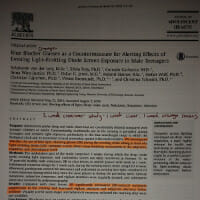
Abstract: PURPOSE: Adolescents prefer sleep and wake times that are considerably delayed compared with younger children or adults. Concomitantly, multimedia use in the evening is prevalent among teenagers and involves light exposure, particularly in the blue-wavelength range to which the biological clock and its associated arousal promotion system is the most sensitive. We investigated whether [...]
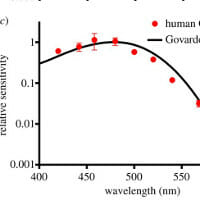
Abstract: A subset of mammalian retinal ganglion cells expresses an opsin photopigment (melanopsin, Opn4) and is intrinsically photosensitive. The human retina contains melanopsin, but the literature lacks a direct investigation of its spectral sensitivity or G-protein selectivity. Here, we address this deficit by studying physiological responses driven by human melanopsin under heterologous expression in HEK293 [...]

Abstract: Light pollution is one of the most rapidly increasing types of environmental degradation. Its levels have been growing exponentially over the natural nocturnal lighting levels provided by starlight and moonlight. To limit this pollution several effective practices have been defined: the use of shielding on lighting fixture to prevent direct upward light, particularly at [...]
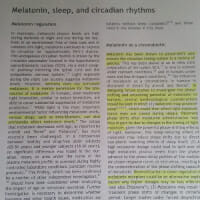
Abstract: In mammals, melatonin plasma levels are high during darkness at night and low during the day. Even in an environment free of time cues and in constant dim light, melatonin continues to express its circadian (or ‘approximately 24-h’) rhythm. This endogenous circadian rhythm is driven by the circadian pacemaker located in the hypothalamic suprachiasmatic [...]

Abstract: In the past 50 y, there has been a decline in average sleep duration and quality, with adverse consequences on general health. A representative survey of 1,508 American adults recently revealed that 90% of Americans used some type of electronics at least a few nights per week within 1 h before bedtime. Mounting evidence [...]

